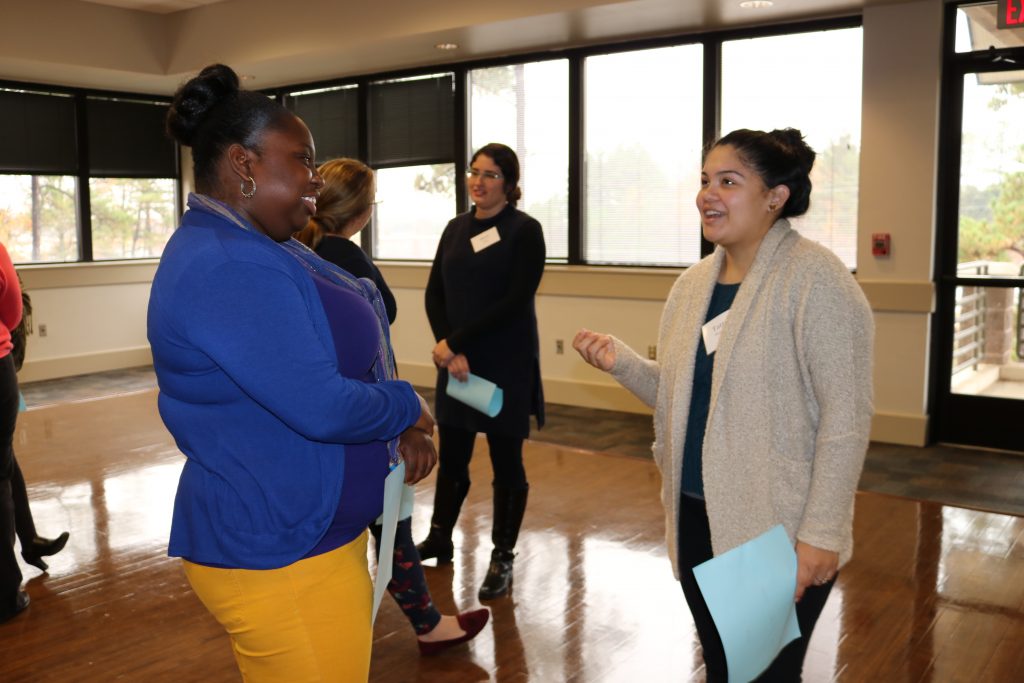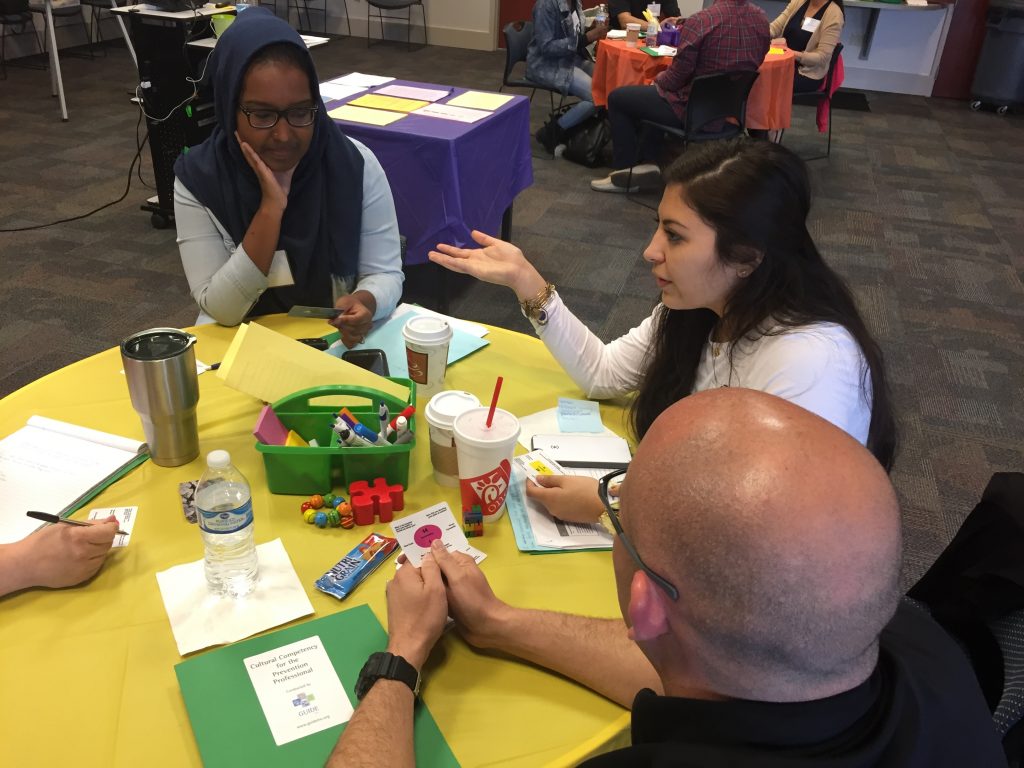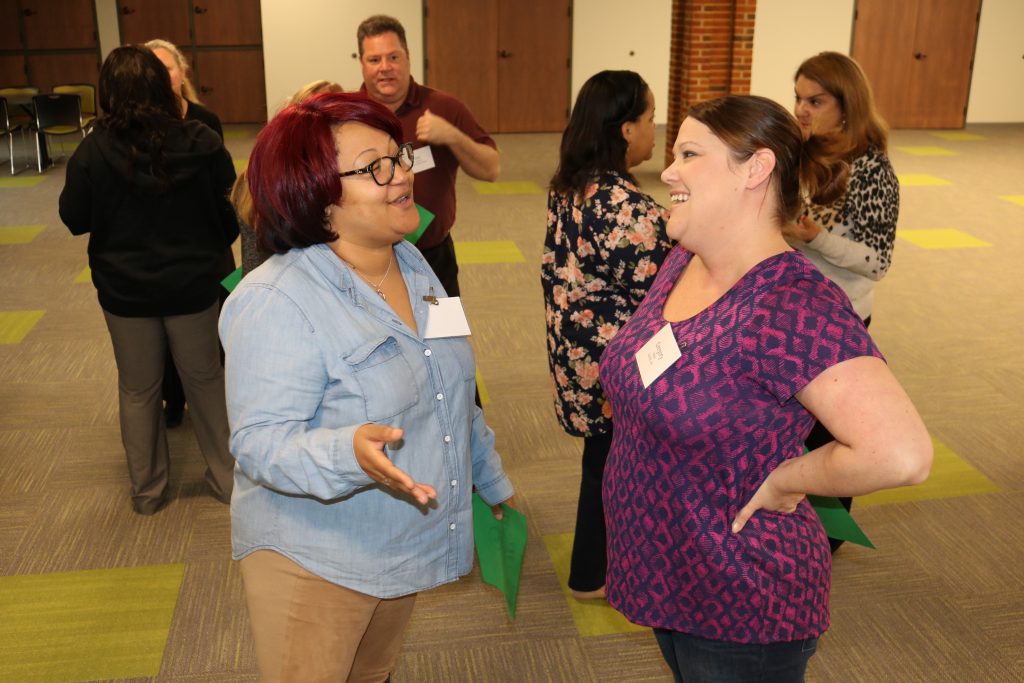Contributed by Alexandria Barabin Harris
Leadership is not solely about a position that one has at school, at home, or in the workplace. Being a leader is much more about who you are, how you serve, and the alignment between your character and values. The most effective leaders care deeply about the people impacted by the work that they do. The culturally engaged leader seeks to understand people in the world around them so that their engagement is meaningful and informed. Mutual trust and support is a desired outcome when building these vital relationships. Yet, some leaders in positions of power or influence choose not to engage the people in their surroundings or opt to remain in shallow communication driven by a one-sided objective, not fully considering the voice of the people they wish to build capacity with or those they aim to serve.
For more than a decade, I have had the opportunity to teach, facilitate, and train leaders on culture, diversity, and inclusion. It is inevitable that during or after a session, someone reaches a powerful epiphany regarding their lack of cultural exposure and makes a connection to the limited diversity or inclusion work that their organizations has done. Frequently, I hear the words “I didn’t know,” as the source. It is an honest response from many who only have their own experience as a point of reference. My response to this is, “Great! Thank you for your honesty. Now that you know, what are you going to do about it?” This question is critical because far too many well-meaning people in positions of power fall short of being the effective leaders they desire to be when they merely stop at their own epiphany. Asking “now what?” means that next steps are needed. An intentional plan of action is required.

My suggestions here are a starting point. These simple ideas take to task the role of communication, cultural engagement, and community building as a foundation for effective leadership. Here it is: Ask and Listen. That’s it. Sound too easy? Although these suggestions are simple, they are not easy. After all, we live in a fast-paced society littered with interruptions from technology with multiple personal and professional priorities. It is a radical adjustment to stop and prioritize time for the sole purpose of hearing from someone else. Not for a grade in school. Not for volunteer hours. Not for “the gram” or other social media platforms. Not for any obligation other than to value the experiential knowledge that emerges from varying lived experiences, which is only revealed through communicating across differences. Let’s take a closer look at the ways that leaders can ask and listen to be more cultural engaged:
 Ask – Take the initiative to directly request a focused opportunity for a person to share their thoughts, feelings, or experiences with you without rebuttal, debate, or negation. Ask from an authentic place of knowing that you do not know everything from someone else’s perspective. Know that as a leader, this makes you a curious eternal learner and minimizes a close-minded world view. In Margaret Wheatley’s book Turning to One Another: Simple Conversations to Restore Hope to the Future, she says:
Ask – Take the initiative to directly request a focused opportunity for a person to share their thoughts, feelings, or experiences with you without rebuttal, debate, or negation. Ask from an authentic place of knowing that you do not know everything from someone else’s perspective. Know that as a leader, this makes you a curious eternal learner and minimizes a close-minded world view. In Margaret Wheatley’s book Turning to One Another: Simple Conversations to Restore Hope to the Future, she says:
“We weren’t trained to admit we don’t know. Most of us were taught to sound certain and confident, to state our opinion as if it were true. We haven’t been rewarded for being confused. Or for asking more questions rather than giving quick answers. We’ve also spent many years listening to others mainly to determine whether we agree with them or not…[when you ask more questions] you’ll end up with a rich tapestry of interpretations that are much more interesting than any single one.”
Not sure what to ask? Here is a list of 36 questions to deeper interpersonal connection developed by psychology researcher Arthur Aron who wanted to understand how people develop stronger relational bonds through conversation.

Listen – Yes, listen! As simple as it sounds, the inclination of a leader, whether it is a mentor or parent, is often to speak, direct, and guide. These actions, often associated with leadership, are important, but rarely is leadership described as the ability to listen well. Being a good listener almost sounds too passive to be described as an attribute of a leader. It’s quite the opposite. Listening can be a very “active” process. In fact, active listening is vital to establishing culturally engaged communities where multiple stories, backgrounds, and experiences are honored. Active Listening is a term that is more than 50 years old, coined by psychologists’ Carl Rogers and Richard E. Farson. This communication technique is described as a listener who will concentrate on the speaker, seek to understand the speaker in context, respond to the speaker, and remember what the speaker has said. Passive? I think not! Active listening is successful when done as a singular activity, not something done when multi-tasking or only listening for key words in order to form a reply. It requires some time and a great deal of intention to close the laptop, put the phone down, stop thinking about the grocery list, and turn the TV off just to hear someone speak. However, the gains are enormous and well worth the effort. It is also imperative that you set aside your assumptions about what you think the person is going to say and simply wait for them to share on their own behalf what is most relevant. Here, Wheatley points to the necessity and value of listening as a tool for building connections across difference:
“We have the opportunity many times a day, everyday, to be the one who listens to others, curious rather than certain. But the greatest benefit of all is that listening moves us closer. When we listen with less judgment, we always develop better relationships with each other. It is not our differences that divide us. It’s our judgements about each other that do-curiosity and good listening bring us back together.”
Implementing these key steps can have a far-reaching impact on each of us, as well as those we lead and serve. When leaders listen well, it can create a ripple effect throughout our organizations and communities. I challenge you to try active listening with your team, staff and students, as well as family and friends. Listen intently and intentionally to their experiences. Dedicate yourself to learning from their stories. Identify the similarities and celebrate the differences. Also, be prepared to share and reciprocate the communication. If you are asked questions, be willing to be an transparent leader who shares their story so others may learn, too. When leaders take the time to intentionally ask and fully listen to these experiences, opportunities for cultural learning, deeper trust, and community connections are created.

Alexandria Barabin Harris speaks, trains, and writes about leadership development and cultural diversity. She has worked as an educator and nonprofit consultant with colleges, youth groups, women-owned businesses, and faith-based organizations. With over 10 years of experience and a Master’s from Syracuse University, Alexandria is a nationally-recognized speaker, facilitator, and workshop leader. As an advocate, she has created initiatives that empower women and girls to lead through education, entrepreneurship, and social change. Alexandria teaches Public Speaking and Leadership at Spelman College.
